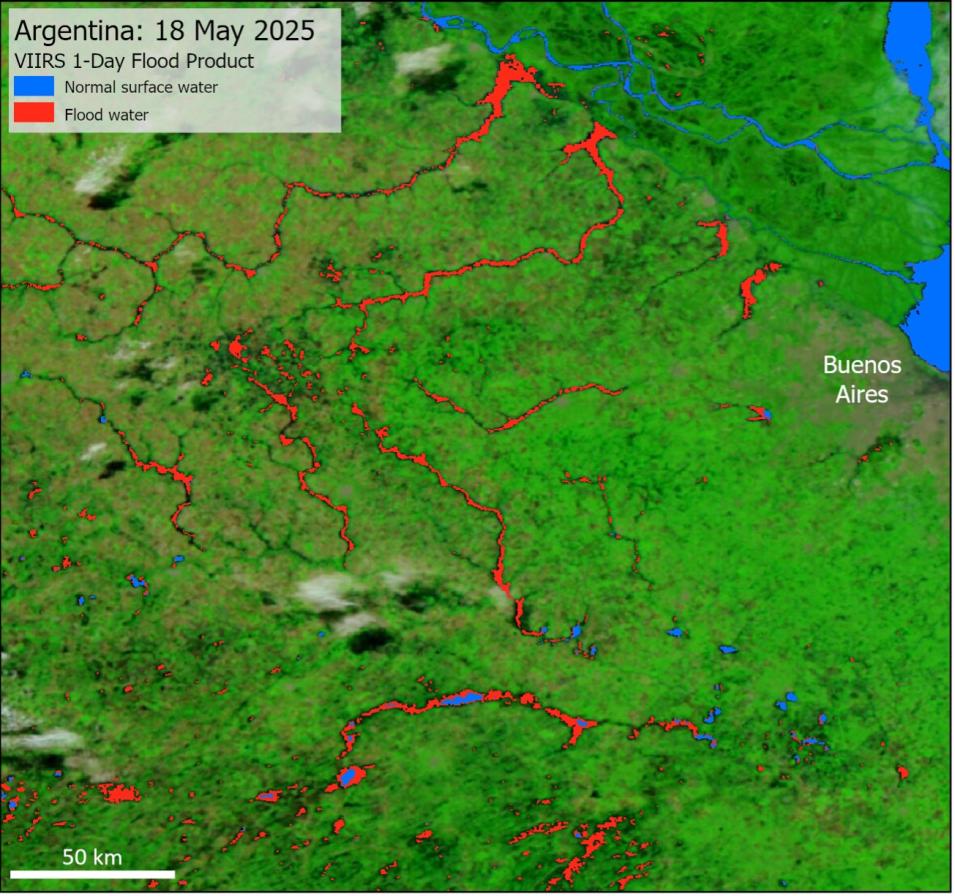In April, NASA released a new near real-time (NRT) flood product generated from the Visible Infrared Imaging Radiometer Suite (VIIRS) instruments aboard the NOAA-20 and NOAA-21 satellites. NASA has been generating a readily accessible global NRT flood product from the Moderate Resolution Imaging Spectroradiometer (MODIS) instruments since 2012, and the addition of this new product from VIIRS will support continuity as the MODIS instruments reach end of life (read more about the MODIS to VIIRS transition that will occur in the next few years). In the meantime, both the MODIS-based and VIIRS-based flood products will be generated in tandem, providing users an opportunity to have a second "look" at floods and enabling them to compare the MODIS and VIIRS products.
As with the MODIS product, the VIIRS product is most useful in relatively cloud free areas and/or where there are longer lasting floods. As MODIS and VIIRS are optical sensors, cloud cover will block the view of the surface, and thus limit the detection of water and flood. Flash floods can also be difficult to capture because observations are only available in a short daily window (early afternoon for VIIRS). Despite these limitations, the VIIRS product has already highlighted recent flooding, including in the U.S. Mississippi River valley and in Argentina, as the below examples demonstrate.

